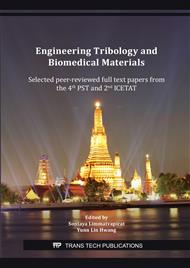p.92
p.98
p.104
p.111
p.117
p.123
p.129
p.137
p.144
Formulation, Physical and Chemical Stability of Ocimum gratissimum L. Leaf Oil Nanoemulsion
Abstract:
Ocimum gratissimum L. leaf oil exhibited many pharmacological properties. This study aimed to formulate and evaluate the physical and chemical stability of O. gratissimum leaf oil nanoemulsion. O. gratissimum leaf oil was extracted by hydrodistillation. The major component of the essential oil eugenol, was analyzed by UV-Vis spectrophotometry. Nanoemulsions of O. gratissimum leaf oil were formulated using polysorbate 80, hyaluronic acid, poloxamer 188, and deionized water by phase inversion composition method. The hydrodynamic diameter, polydispersity index, and zeta potential value of O. gratissimum leaf oil nanoemulsion was evaluated by a dynamic light scattering technique. The %remaining of eugenol in the nanoemulsion was analyzed by UV-Vis spectrophotometry. The essential oil extracted from of O. gratissimum leaf oil was a clear, pale yellow color. The %yield of the essential oil was 0.15 ± 0.03% v/w. The size of the nanoemulsion was less than 106 nm. The polydispersity index of the nanoemulsion was ranging from 0.303 - 0.586 and the zeta potential value of the nanoemulsion was closely to zero, depending on the formulation component. O. gratissimum leaf oil at concentrations ranging from 0.002 - 0.012% v/v contained 35 - 41% of eugenol. The size of nanoemulsion was significantly decreased after storage at 4 °C, while significantly increased upon storage at 45 °C. The size of nanoemulsion stored at 30 °C did not significantly change. The %remaining of eugenol in the nanoemulsion was more than 90% after storage at 4 °C and 30 °C for 28 days. The percentage of eugenol remaining in the nanoemulsion stored at 45 °C was more than 85 - 90%, suggesting that the temperature affected the stability of eugenol in the nanoemulsion.
Info:
Periodical:
Pages:
117-122
Citation:
Online since:
October 2021
Price:
Сopyright:
© 2021 Trans Tech Publications Ltd. All Rights Reserved
Share:
Citation:


